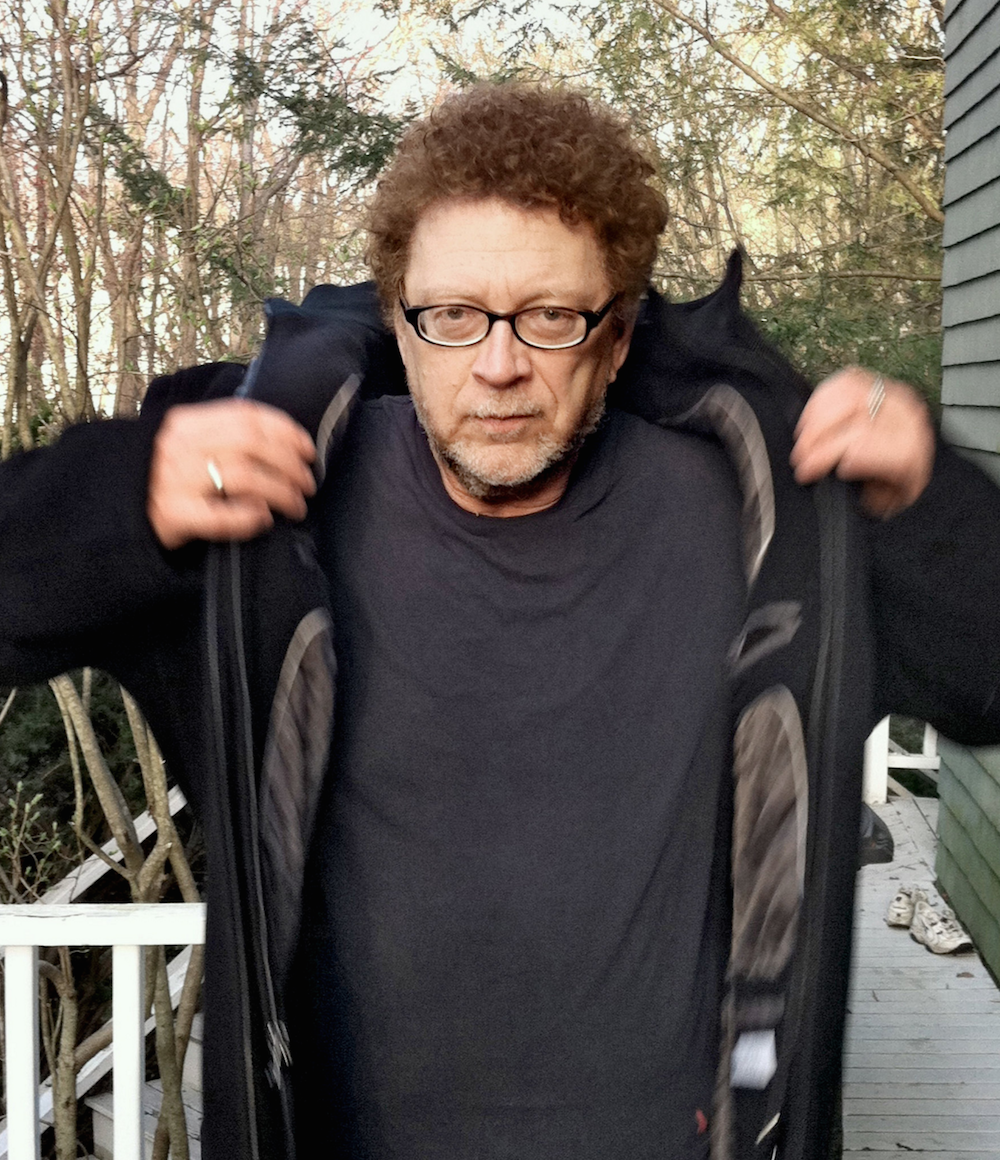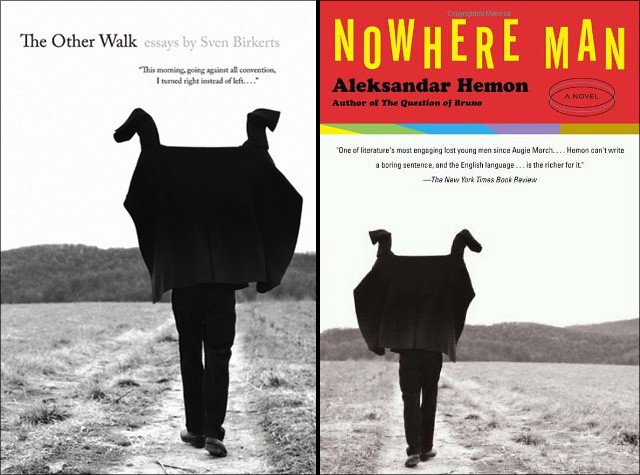What Was the Author Photo?
by Matthew Shaer
Last fall, the New York Times published a review of a new book, Changing the Subject, by the essayist Sven Birkerts. The review was forgettable. The author photo that ran alongside it was not — blindfold me right now, and I’d be able to recall it for you in every hypnotizing detail. The way Birkerts approaches the lens, his arms upraised, his unzipped jacket opening around him like a magician’s cape. The hesitant set of his lips, tacking up at one corner into a half-smile. The dense carpet of hair that looks as if it would bend a comb. The autumnal aura evoked by the leafless trees. And above all, the blur of the hands, which suggest momentum and unpretentiousness on the part of the shooter and her subject — the day is too precious to waste on two takes.

I spent a lot of time thinking about the photo. An inordinate amount, really. (I even had a strange dream about it, where I was cast in Birkerts’ place, and the jacket was actually a wing suit.) Its anomalousness shook me: If the vast majority of author photos fit into one of a handful of standard poses — the Fist-on-Chin (conveying thoughtfulness), the Stare-Out-Window (inner depth), the Icy Stare (strength), the Hearty Laugh (confidence!), etc. — here was an author photo that threw centuries of literary convention in our face. Here was a man who was not even fully dressed in his author photo.
I did some Googling. The image had first emerged in 2011, around the time Birkerts’ previous book, The Other Walk, had been released. I thought about getting in touch with Graywolf Press, Birkerts’ publisher, but I pictured the recipient of the email reading it aloud to a room full of coworkers. Next, I considered emailing Birkerts directly, but I worried he’d think I was making fun of him. Which I emphatically wasn’t! I liked the photo more than I’d ever liked an author photo. I just needed to understand it.
A few months passed. Last week, I got a pop-up message warning me that my laptop’s memory was almost full. I decided to delete a bunch of files, starting with the photo folder. The Birkerts author shot was near the top. I’d saved a high-res version. It was obviously a sign: This photo wasn’t going to quit me. So I sent Birkerts a message on Twitter, explaining who I was and what I wanted. He was skeptical — “I don’t think this will bring the readers in by the droves,” he wrote — but he gave me his phone number anyway.
Maybe we can start with you setting the scene for me a little bit. Where was the photo taken?
Well, I live outside of Boston, in Arlington, which is the next town over after Cambridge. I’ve been living here for several decades, but the picture was taken in 2011, on my back porch, a few feet from where I’m sitting now.
What time of year was it?
I can’t remember exactly, but I know it was not the time of year where I would normally be wearing a coat — I had to find one to wear. It was a black coat. It wasn’t readily accessible.
Talk about how the image came about. Was it planned?
In a way, yes. This was several months before the release of The Other Walk, and I’d been grousing to my daughter about needing an author photo. Suddenly, I sort of pictured the cover, which showed a man, from the back, holding up a jacket over his head.
That man was not you.
On the cover? No. It was an image the publisher had chosen.
Okay.
But I got this idea: What if we took a photo from the other side — not so much making fun of the cover photo, but referencing it in a weird way. So if the front cover showed the back, the back cover would show the front. I grabbed the coat and asked my daughter to see if she could snag a photo.
On a camera?
No, on her phone. You know, it’s remarkable — in the old days, you’d have a guy come in, and take a picture of you sitting at your writing desk. A very serious photo. And I have photos like that! But in this case, it was all impromptu: My daughter took the photo, sent it to me, and I sent it to a person at my publisher, who was able to say she liked it within a few minutes. It was a short-circuiting of what had been formerly such an elaborate, time-consuming process. Story of our times.
So it’s starting to come together for me, now that I’ve got the full backstory. But when the Times used that photo, they just listed a photo credit — it’s not like they explained that the jacket photo was originally intended as an inverse of The Other Walk cover. Did you ever worry someone might see the image in the Times, and be like, “Why is this man putting on his jacket?! Where is he going?”
Well, I guess at the moment when it actually landed, it did seem a little odd. But the other thing is that I’ve become basically habituated to the sight of that image, so the image itself didn’t shock me as much as the sudden contextual repositioning. But also, the reviewer wasn’t totally kind to my book, and I had several people write to me to say, “Forget it, no one cares about the sniping. All they’re going to remember is that intense image of you coming forward, towards the camera.” There was this idea that the photo was worth far more in that way than whatever was said in the review.
See? I’m not totally crazy, being fixated on the image.
Of course you’re crazy. But that’s fine. I should tell you about one other wrinkle in this thing, which I didn’t discover until after the fact, until after the book was out. Are you in front of a computer?
Yes.
Go to Amazon and look up the writer Aleksandar Hemon: H-E-M-O-N. Now go to the paperback of Nowhere Man. See? It has almost exactly the same cover image as The Other Walk. The angles are a little different…. Ummmm. Yeah, anyway, the minute I saw that, I wrote to my editor, and said, “Uh-oh.” But she told me not to worry. So I didn’t.

Thanks for taking the time to talk, Sven.
Thank you.
Interview has been lightly edited and condensed for clarity.
